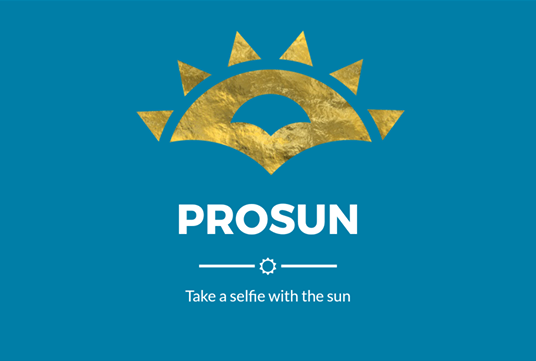ProSun | Let's go to the Beach!
Awards & Nominations
ProSun has received the following awards and nominations. Way to go!
The Challenge | Let's go to the Beach!
ProSun
Our solution is an application which with the aid of the smartphone’s camera will show the UV index of the user’s location in order to put on the right type of sunscreen.We hope for a future with less sunburns and reduced skin cancer incidents.

The problem
Who doesn’t love Sun, right?
Well, we know excessive exposure to UV radiation can result in chronic harmful effects on our skin, eyes, and our immune system.
Freckling and sunburns are familiar effects of over-exposure, along with the higher risks of skin cancer. According to the World Health Organization, 66,000 die every year from melanoma and from other types of skin cancer.The problem is getting bigger everyday, as the Ozone layer becomes thinner due to Global Warming. This is supported by the fact that the rates of melanoma have been rising steadily for the last 30 years.
But using too much sunscreen was never the solution either!
Skin types differ from human to human and not wearing the right sunscreen (type and SPF index) can lead to Vitamin D deficiency and skeletal diseases.
The solution
Our mission is to bring awareness and,respectively, increase the protection level from the UV radiation.
World Health Organization provides real-time data about the UV radiation around the globe but due to some crucial factors like the time of the day, the location of the beach (latitude, altitude) and the cloudiness of the sky, these data are quite often not accurate.
Our proposal is an application which analyses the colour saturation of the picture that the user captured and returns the UV index of the user’s location. An Australian research from 2012, proves that such an algorithm is feasible.
On a more technical note, smartphone cameras use metal oxide semiconductor (CMOS) image sensors. CMOS image sensors possess an inherent sensitivity to UV wavelengths as small as 200 nm. The Ultraviolet rays wavelengths are classified as UVA(320–400 nm) and UVB(280–320 nm).
Combining our crowdsourcing project with the World Health Organization’s data, we will be able to provide accurate data about the UV radiation levels around the world.
The application suggests the right type of sunscreen with the right SPF index depending on the location’s real-time data about UV radiation levels.The only thing the user has to do is to provide his skin type.
Furthermore, our application recommends how long you should stay exposed to the sun and alerts the user if the radiation level from the Sun’s rays reaches a critical level.
By 2030, our goal is to make sunscreen lotions accessible to anyone.
Our vision is that SunKiosks (kiosks with the technology of an arduino and UV light sensor)s will hand out sunscreen portions for free when someone registers his skin type. The SunKiosks will be sponsored (as a donation) by companies who want to boost their Corporate Social Responsibility.
Team Members
- Anastasios Gialamas
- Miltiadis Alexis
- Despoina Florou
- Konstantinos Grigoriou
- Theodoros Grigoriou
Implementation : https://prosun.staging.gr/
References
- https://www.google.com/patents/WO2014051789A1?cl=e...
- https://eprints.usq.edu.au/22779/4/Igoe_Parisi_Car...
- http://www.skincancer.org/skin-cancer-information/...
- http://www.nhs.uk/news/2014/06June/Pages/Just-five...
SpaceApps is a NASA incubator innovation program.